Take a walk through time as you enjoy the murals of Islington Village, depicting the history of this area of Toronto that was once known as Village of Mimico.
At first glance, it looks like someone painted a giant class picture on the wall of an old building. But the huge mural, with its dozens of children sitting in neat rows, actually tells the story of not one, but of 100 years of graduating classes from nearby Islington Junior Middle School. The faces are real. From the earliest Irish immigrant children to the rich multicultural mix which the area boasts today, the images have been drawn from the school’s archive of photos.
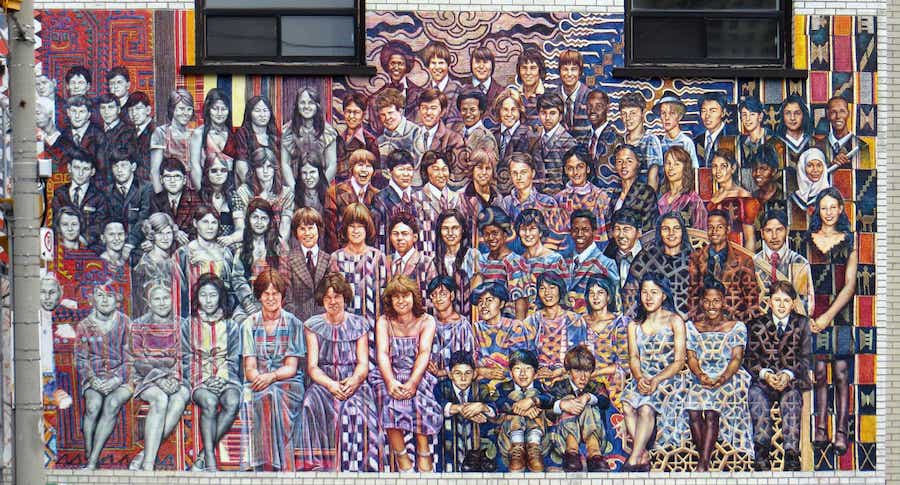
A closer look reveals the transformation through time of the faces, the hairstyles, and the clothing of the students. The artist, John Kuna, has astutely captured the evolution of decades by subtly merging colour into the earliest black and white images.
Kuna’s murals can be found in 40 cities around the world. He tells stories with paint in grand style, covering enormous expanses of bare wall with colour. In the Village of Islington, at the western edge of the huge metropolis that is Toronto, 27 murals brighten once blank walls along a five block stretch of Dundas Street. Some 80 percent of these are his work.
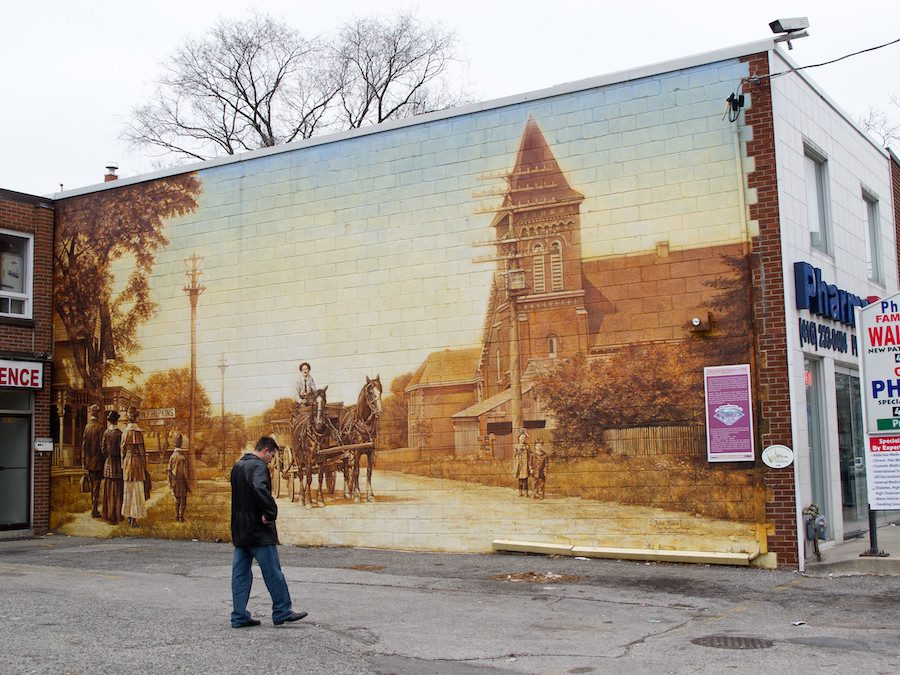
Asked about the Islington mural project, Kuna has said, “It shows people that the ground they walk on used to be something else. Islington is not directly the site of major historical events and yet there are stories there that form a narrative of how a small settlement became a town, which was eventually integrated into one of the largest, uninterrupted urban landscapes in the country.”
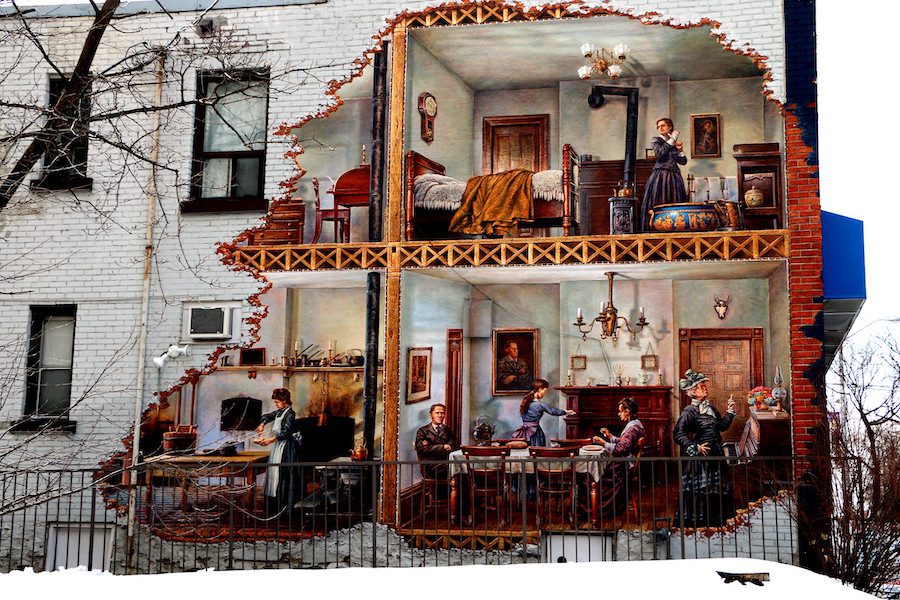
The murals take us back in time and compel the passerby to stop and gaze. It’s impossible to ignore an approaching platoon of dozens of red coated infantry, led by mounted commanders on the side of a bank building. The plaque beside this mural explains that this march of Colonel Battersby’s troops to Burlington was an attempt to combat the imminent American threat during the 1812 war. Painted to celebrate the bicentennial of the war of 1812, I’m intrigued by a central figure, pointing the way to Battersby. My volunteer guide, Corinne LaBossiere, points out that he is one of the African American pioneers who joined the battle on the Canadian side. And she adds, “These soldiers would have marched down the street we’ve been walking along. It was carved through the forest in 1796.”
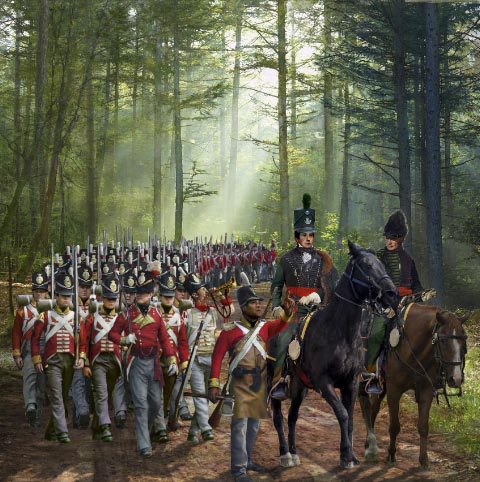
Further up the street, Montgomery’s Inn, built by an Irish immigrant in 1832, would have depended on the traffic along this road for customers seeking both beds for the night, and a tankard of ale in the bar room. A free historic site today, the inn offers a fascinating glimpse into the area’s earliest years, when Islington was known as the Village of Mimico. The name comes from the Ojibway word which means ‘abundant with pigeons’. It was very apt.
The passenger pigeon was thought to have been the most numerous species in the world at the time European colonization began in North America. Early diaries describe the sky being darkened as huge flocks of these pigeons flew over. Sadly, locals cheerfully shot them by the dozens as sport, resulting in their ultimate extinction. Kuna’s magnificent, colourful mural mourns their passing.
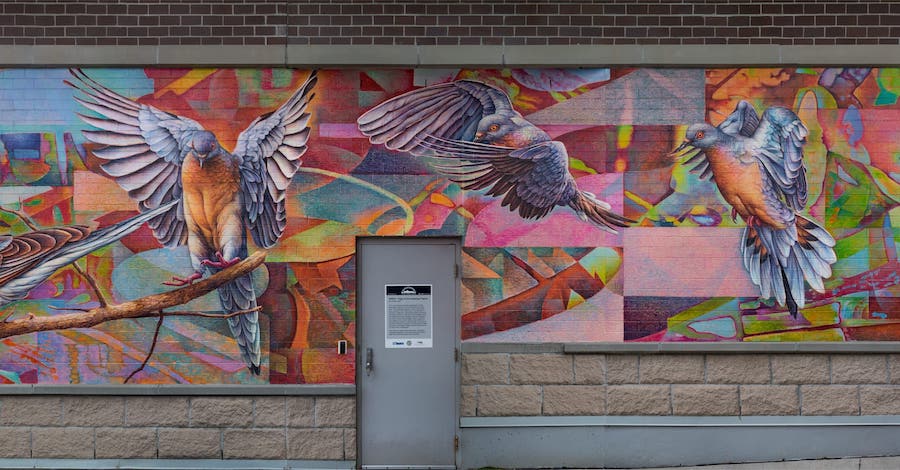
Some murals offer small vignettes. On the side of an old house, Kuna has painted the destruction wrought by Hurricane Hazel in 1954, and the rescue efforts after the devastating storm flooded many parts of the city.
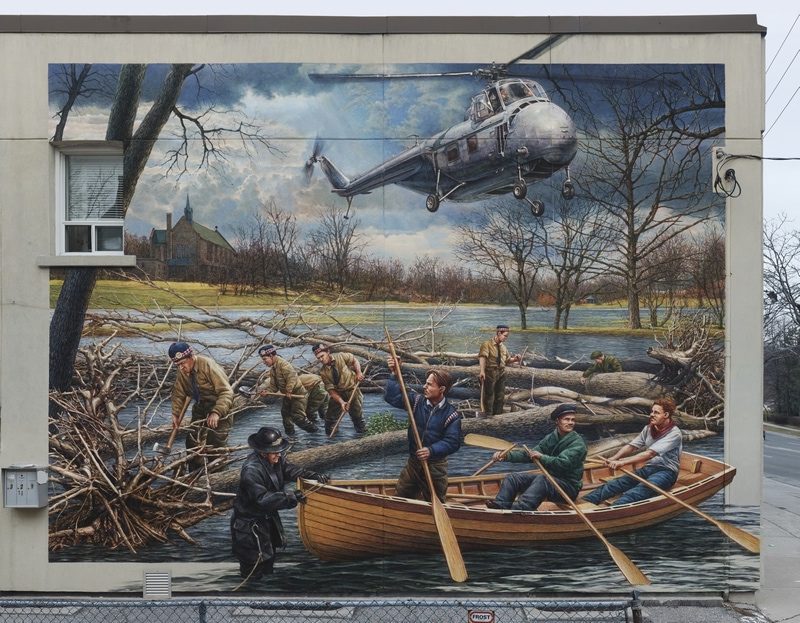
My favourite, on the wall beside a dry cleaning store, depicts a very different sort of catastrophe. In 1944, young Harold Shipp, who would go on to become a prominent local business man and philanthropist, arranged for a Lancaster Bomber to fly over during the football game at the nearby high school. It dropped hundreds of leaflets, a few of which were free tickets to the upcoming school dance. In the mural, Chinese market gardeners tend their cabbage crop nearby. Unfortunately, the wind scattered the papers across these gardens and eager students chasing them trampled the field of carefully tended cabbages!
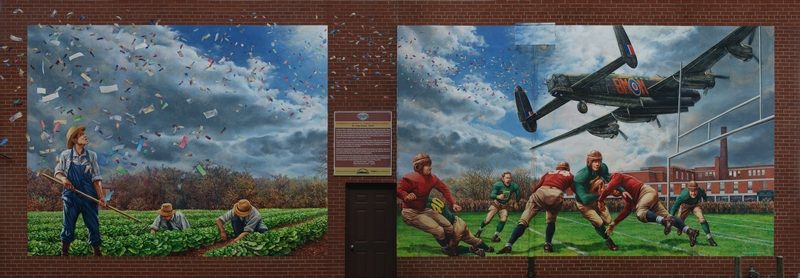
On the side of what used to be a branch of the Toronto Conservatory of Music, a young Glenn Gould wows the audience at a recital. It’s a favourite picture spot for visitors. Like LaBossiere in our photo, they love to pose beside the prodigy, pretending to play along with him.
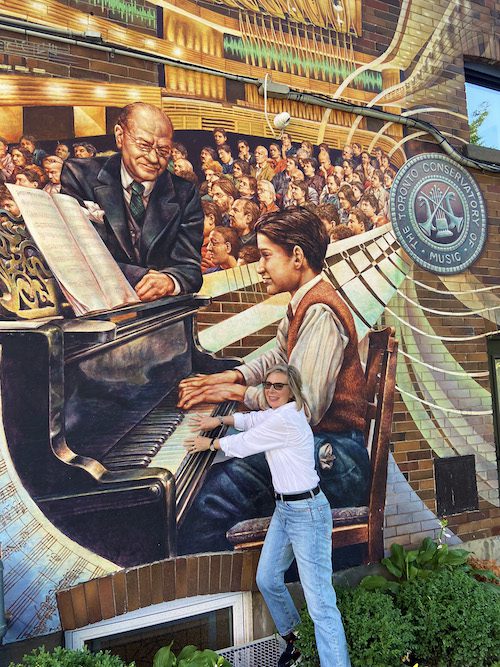
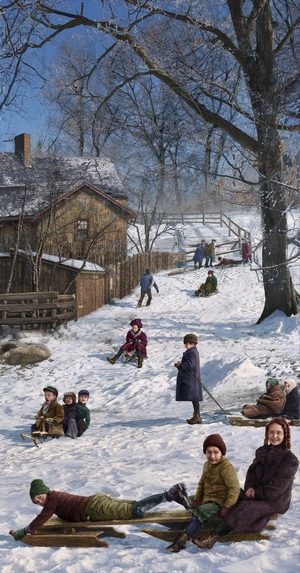
Kuna’s art is eclectic, ranging from a colourful, almost Impressionist tribute to Briarly, a beautiful stately home now gone, to sepia-toned reproductions of historical images. The favourites of many visitors are those that offer a nostalgic glimpse of times past, when locals tobogganed down the hill beside Montgomery’s Inn, fished in Mimico Creek, or swam in the nearby Mill Pond.
According to LaBossiere, the mural of the swimmers in the Mill Pond was considered quite risqué when Kuna first unveiled it!
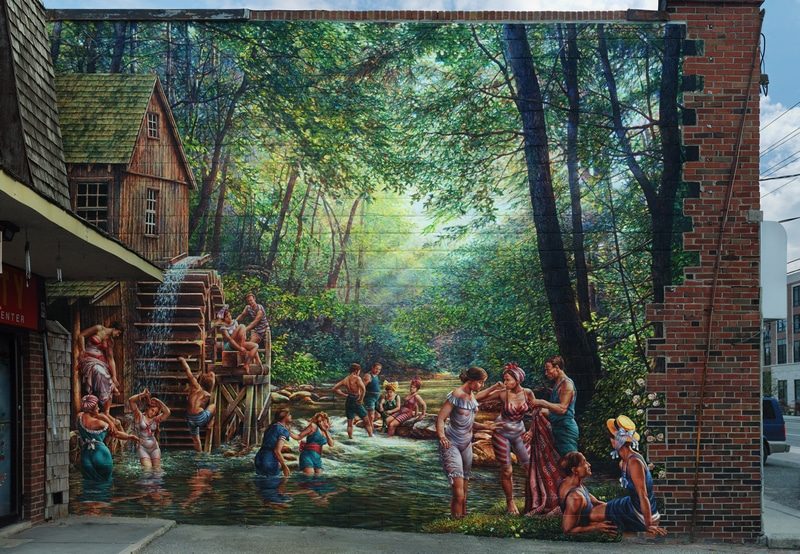
Two very special murals have been added to Kuna’s extraordinary collection. Both celebrate the Universal Declaration of Human Rights. The Art Alley Mural Project, created for Amnesty International’s Project: Urban Canvas, includes a specially commissioned poem by Dionne Brand, the City of Toronto’s Poet Laureate. Based on Article 13: Everyone has the right to freedom of movement and residence within the borders of each state. Everyone has the right to leave any country, including his own, and to return to his country.
A second on the bridge by the inn states simply: Everyone Everywhere. It represents Article 6: Everyone has the right to recognition everywhere as a person before the law.
The Islington Village murals are unique and delightful. Easily reached by subway from downtown Toronto, they provide a fascinating stroll through time along Dundas Street, with some excellent eateries en route.
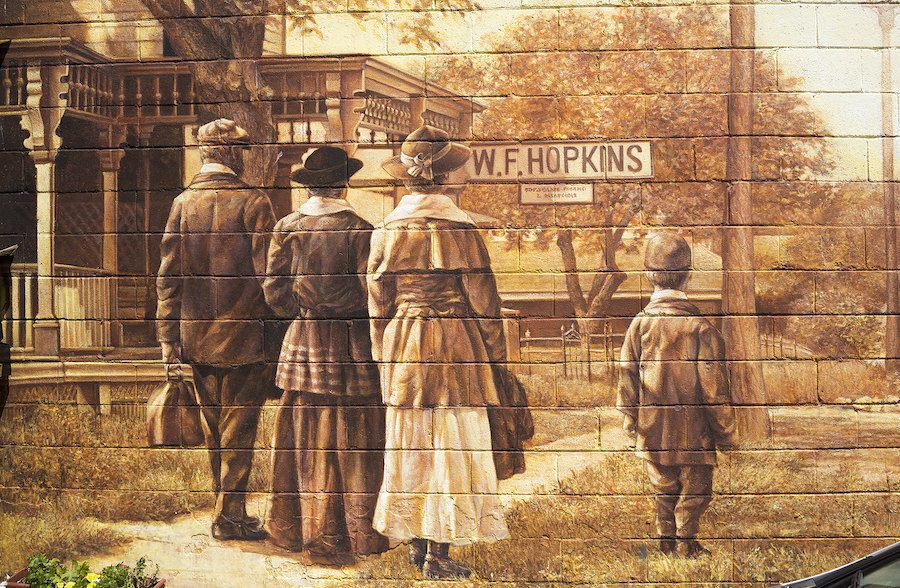
Toronto Accommodations Map
Planning a visit to Toronto? Check out this interactive map to different accommodations available in Toronto, Ontario, Canada.
Disclaimer: There are affiliate links in this post. If you make a purchase after clicking on one of these links, we may receive a small commission at no extra cost to you. This commission contributes to paying our writers for their storytelling. We only post links to things that we ourselves have tried.
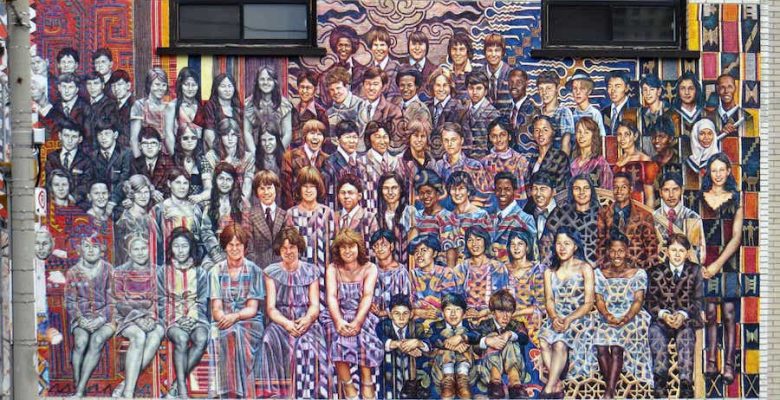
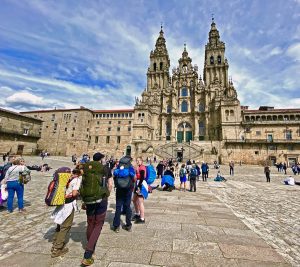

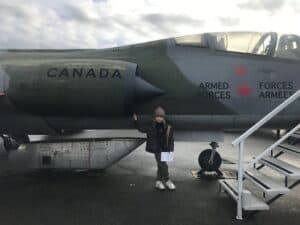
This piece is so very well researched and interesting to read. The next time i walk along Dundas i will be able to add a story to each painting. The first mural discussed , the one of the graduates of Islington Middle school was indeed a revelation…Actual photos from the archives! Well done Liz